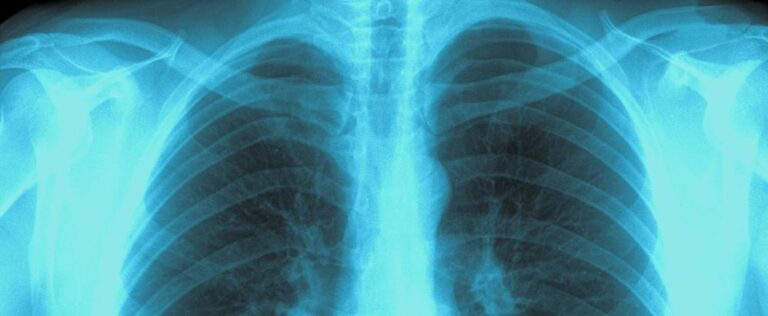Asthma affects 300 million people worldwide and causes 239 000 deaths, while 80 million have moderate-to-severe chronic obstructive pulmonary disease (COPD). And the numbers are rising.The difficulty with current treatment is that two people may have similar breathing trouble but, because the fundamental cause of their problem is different, giving them the same medication can lead to a good result for one of the patients but no improvement in the other.‘The way we define disease is still based on their symptoms, but we are learning that underlying the things patients complain about is quite a broad spectrum of biological processes,’ said Professor Chris Brightling of the University of Leicester, UK, who leads the EU-funded AirPROM research consortium.He hopes the ‘one-size-fits-all’ approach to managing asthma and COPD may become a thing of the past.“‘We are learning that underlying the things patients complain about is quite a broad spectrum of biological processes.’Prof. Chris Brightling, leader of the AirPROM project‘Recognising this diversity is important if we are to give the right treatment to the right patient and this approach may also guide drug discovery,’ said Prof. Brightling.Sophisticated modelsAirPROM brings together a diverse group of experts to develop sophisticated models that can predict how an individual’s lung disease will progress and how they will respond to various treatment options.Scientists at AirPROM are using data from people with asthma or COPD who previously took part in other EU-funded studies such as BTS Severe Asthma, U-BIOPRED and EvA FP7.This provides a wealth of information from lung function tests, blood samples, cells from the lung, and images from CT and MRI scans.‘We have models for different parts of the disease. Some treatments may be targeting very specific pathways at a cellular or even subcellular level. Others may be affecting the airway more directly,’ said Prof. Brightling.The more patient data that is added to the system, the more the computer models ‘learn’, becoming more accurate in treating the individual patient.At the Clinical Investigation Centre in Laennec hospital, Nantes, an asthmatic patient exhales into a devise to measure the content of nitric oxide in their breath. © INSERM/ Patrice LatronAt the Clinical Investigation Centre in Laennec hospital, Nantes, an asthmatic patient exhales into a devise to measure the content of nitric oxide in their breath.© INSERM/ Patrice LatronThis personalised approach could pave the way for patients to have a series of tests – lung function, blood samples, MRI scans – when they see their doctor. That means their treatment is tailored to their specific disease, making it much more likely to deliver results.The cost of this modelling is not yet clear but could be in the order of EUR 5 000 per patient, particularly where CT or MRI scans are used. This suggests it may not be used for every patient with mild asthmatic symptoms, but could help to guide doctors’ decisions when prescribing expensive biological treatments or surgical interventions to those with more serious conditions.‘Some of the newer biologics might cost EUR 20 000 to EUR 30 000 per patient per year while thermoplasty (using radio waves to apply heat to the lungs) could be EUR 10 000. So it may still be cheaper to do the modelling if we can predict which patients will do well, which will do badly, and even which ones are at risk of potential harm,’ said Prof. Brightling.Asthma treatment looks at the role of virusesA research group is looking at the mechanisms through which rhinoviruses – which cause the common cold – trigger acute bouts of lung disease in people with asthma.‘We find that people with asthma and people without asthma get colds – but people with asthma suffer more rapid onset, more severe symptoms and the illness is longer-lasting,’ said Professor Sebastian Johnston who works on the EU-funded MORIAE project.His team has developed an inhaled medication which is being tested in asthma patients to help spur the body’s defence mechanism. If it is proven to work, the idea would be for asthma patients to take it when they feel a cold coming on. This could, it is hoped, prevent or control the worst of virus-induced asthma attacks.
This article was originally published in Horizon, the EU Research and Innovation magazine.
Add to favorites:
Share:
Listing Description
Video
Documents
No documents available.
Ask KETMarket to make a contact
Connect with the Listing Owner!
💬 Please log in now to askKETMarket to make a contact. Not a member yet? Sign up for free and start connecting today!
Video
Related Funding and Finance Opportunities
Unlock Exclusive Funding Opportunities!
🔑 Get instant access to tailored funding opportunities that perfectly match your needs. This powerful feature is exclusively available to our premium members—helping you save time, stay ahead of the competition, and secure the right funding faster.
Upgrade to Premium now and never miss an important opportunity again! Already a premium member? Log in here to explore your matches.
Related Innovation Offers
Discover Tailored Innovation Offers!
🚀 Gain access to technology solutions that match your specific needs and interests—carefully selected to support your innovation goals. These offers are exclusively available to our premium members, helping you identify relevant technologies faster and start the right conversations with potential partners.
Upgrade to Premium now and explore your personalized technology matches today! Already a premium member? Log in here to view your tailored offers.
Related Knowledgeable Resources
Discover More with Premium: Related Knowledge Resources
🔒 You’re missing out on expert-curated knowledge specifically matched to this topic. As a Premium member, you gain exclusive access to in-depth articles, guides, and insights that help you make smarter decisions, faster.
Whether you’re preparing a funding proposal, researching a new market, or just need reliable information—our Premium knowledge matches save you hours of research and point you directly to what matters.
Upgrade to Premium now and instantly unlock relevant knowledge tailored to your needs! Already a member? Log in here to view your personalized content.

